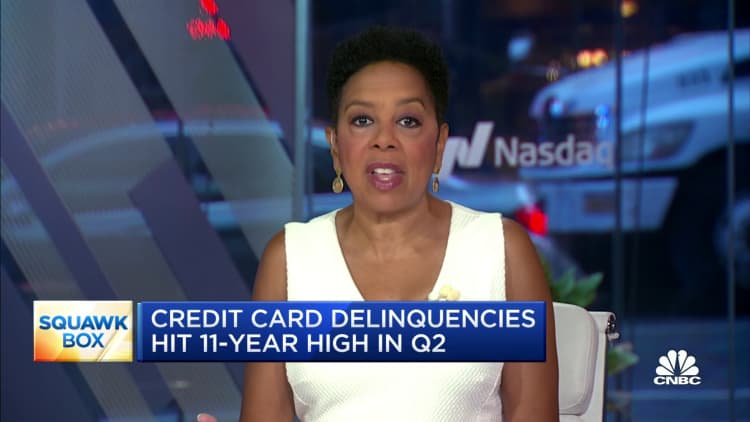
For some, high-rate debt is ‘their only option’
Rising balances may present challenges for some borrowers, particularly when student loan payments resume this fall, the New York Fed researchers said.
“We also can’t discount the importance of higher interest rates on the costs of borrowing for households,” said John Sedunov, associate professor of finance at Villanova University’s School of Business. “Not only are goods and services more expensive, but so is money.”
On the heels of another rate hike last month by the Federal Reserve, the average credit card rate is now more than 20% on average, an all-time high.
People aren’t financing purchases at 20% because they have other options.
Greg McBride
chief financial analyst at Bankrate
At nearly 20%, if you made minimum payments toward this average credit card balance, it would take you more than 17 years to pay off the debt and cost you more than $8,366 in interest, Bankrate calculated.
“People aren’t financing purchases at 20% because they have other options,” said Greg McBride, chief financial analyst at Bankrate. “They’re doing that because it’s their only option.”
Factor in a personal savings rate that was hovering around 4.3% in June — well below a decades-long average of roughly 8.9% — “I think it is painting a picture of an economy in which inflation has taken its toll on households,” Sedunov said.
Overall, an additional 19 million new credit accounts were opened in the latest quarter, boosted in part by originations among Gen Z, or adults ages 18 to 25, gaining access to credit cards. The tally of total credit cards hit a record 530.6 million, TransUnion also found.
“Like the overall population, many Gen Z borrowers are facing the same financial challenges brought on by high interest rates and inflation,” said Michele Raneri, vice president of U.S. research and consulting at TransUnion. “As a result, they are tapping into these available credit products to help them cope with rising expenses.”
As the number of credit card accounts in the U.S. rose, delinquencies notched higher, the report said. TransUnion defines a delinquency as a payment that’s 90 days or more overdue.
“The increase in delinquencies over the past several quarters is something to monitor,” Raneri added. Already, lenders have started to restrict access to less-experienced credit users, she said.
How to tackle high-interest credit card debt
krisanapong detraphiphat | Moment | Getty Images
“It’s still a tremendous opportunity to grab a 0% balance transfer card,” McBride said. Cards offering 12, 15 or even 21 months with no interest on transferred balances are out there, he added, and “if you have credit card debt, that is your first step — to transfer that balance and give yourself a tailwind on a path to debt repayment.”
Borrowers may also be able to refinance into a lower-interest personal loan. Those rates have climbed recently, as well, but at 10%, on average, are still well below what you currently have on your credit card.
Otherwise, ask your card issuer for a lower annual percentage rate. In fact, 76% of people who asked for a lower interest rate on their credit card in the past year got one, according to a LendingTree report.
“The fact that card issuers are still willing to give breaks like that, even in the wake of a year of frequent rate hikes, is very, very good news for cardholders,” said Matt Schulz, chief credit analyst at LendingTree.
